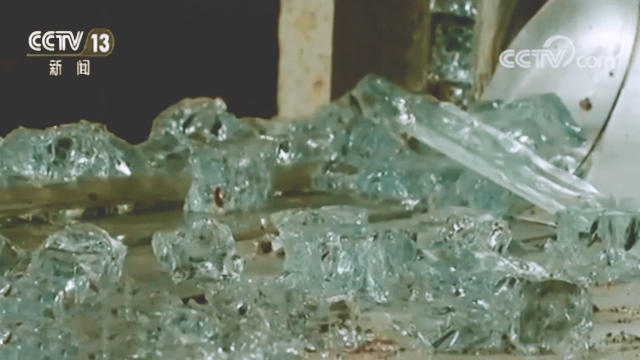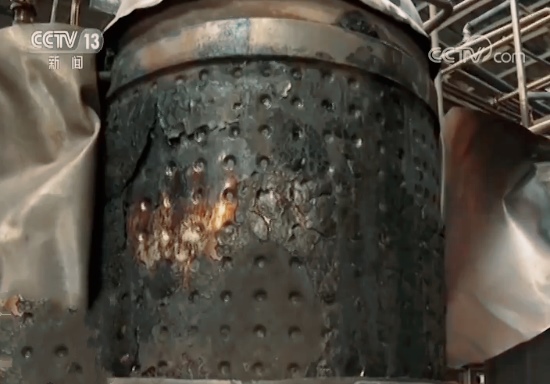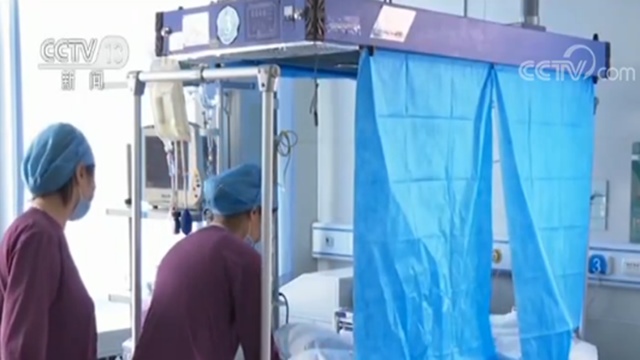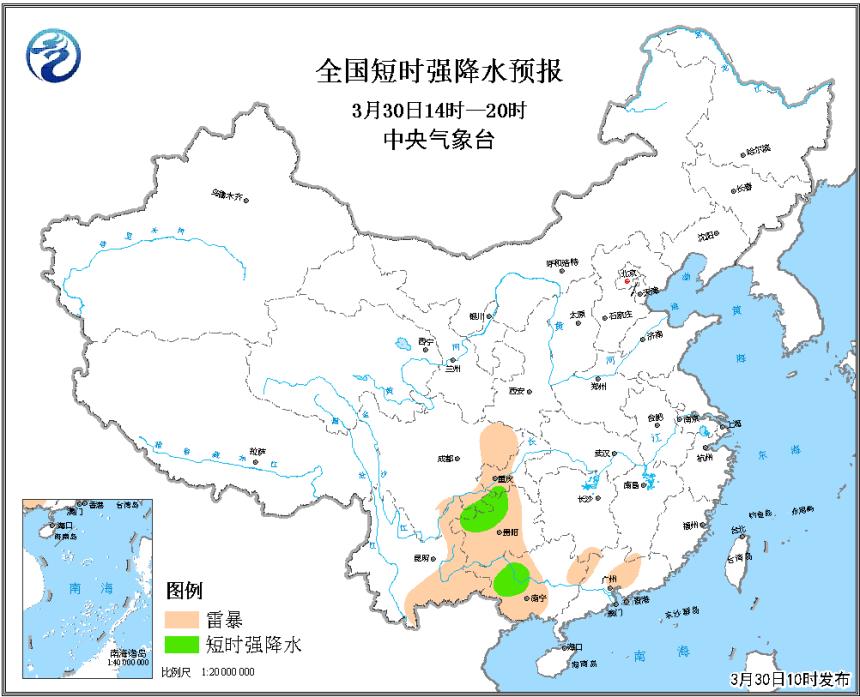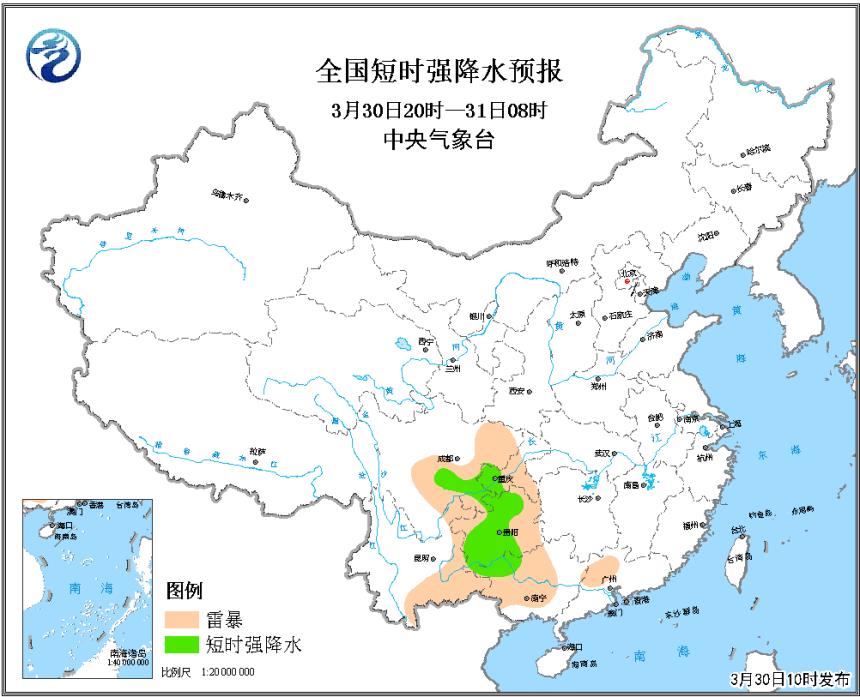"In fact, the villagers’ awareness of fire prevention has improved a lot now, and the real fire fighting and rescue tasks at work have been reduced to a certain extent. We have begun to closely integrate fire fighting forces with rural revitalization. I hope ‘ Give full play to advantages and highlight characteristics ’ , to embark on a rural revitalization with unique characteristics of Miao and Dong villages ‘ Safe road ’ 。” In the Leishan County Fire Rescue Brigade, Luo Jie, the instructor of the brigade, is introducing the situation of the team to reporters.
Leishan County is located in the southwest of Qiandongnan Miao and Dong Autonomous Prefecture, Guizhou Province, with dense forests and winding waters. It is dominated by ethnic minorities such as Miao and Dong, and has the largest Miao village in the world, Xijiang Miao Village. In recent years, Xijiang Qianhu Miao Village Scenic Area has become a tourist attraction, and the county has vigorously implemented "global tourism" to fully activate the "new kinetic energy" of rural revitalization. However, the mountain features, the housing structure of Miao village and the security risks brought by "tourism fever" all bring challenges to the local grass-roots fire protection work.
How to get through the "last mile" of fire safety management based on local characteristics; How to give full play to the firefighting power, practice "people’s firefighting for the people", and realize the effective connection between consolidating and expanding the achievements of poverty alleviation and rural revitalization? The Leishan County Fire Rescue Brigade combines the main responsibility and main business, thinks ahead and takes the initiative to explore and form the Xijiang model of grassroots firefighting work, and escorts rural revitalization with safety.
Enrich strength
Take the lead in realizing full coverage of full-time fire brigade of township government.
Records of store fire inspection during flood control in Xijiang Town, fire safety checklist for farmers during this winter and next spring, and "one household for one file" for fire safety in Xijiang Miao Village Scenic Area … In the office of Xijiang Town Government full-time fire brigade, piles of forms and documents record the fire safety inspection work of the brigade in detail.

"We will carry out fire safety inspections on 21 administrative villages in Xijiang Town every month and at important time nodes, and check the water level of drinking water pools and special fire-fighting pools in scenic spots, and implement the system of twice-daily inspection and twice-reporting." Li Jian, vice captain of the team, said that the information collection and archiving of 571 business premises and 1,270 farmers in Xijiang Scenic Area have been completed.
In order to improve the county’s fire prevention and control ability, Leishan County forced the grassroots responsibility, promoted the establishment of fire safety committees and fire workstations at the county and township levels, established a three-level fire safety guarantee system at the county, township (town) and village levels, and invested 3.5 million yuan to complete the construction of seven township full-time fire brigades, taking the lead in realizing full coverage of township government full-time fire brigades in the whole state, and completed the construction of 125 volunteer fire brigades in more than 50 wooden contiguous villages, further consolidating the foundation of rural fire prevention and control.
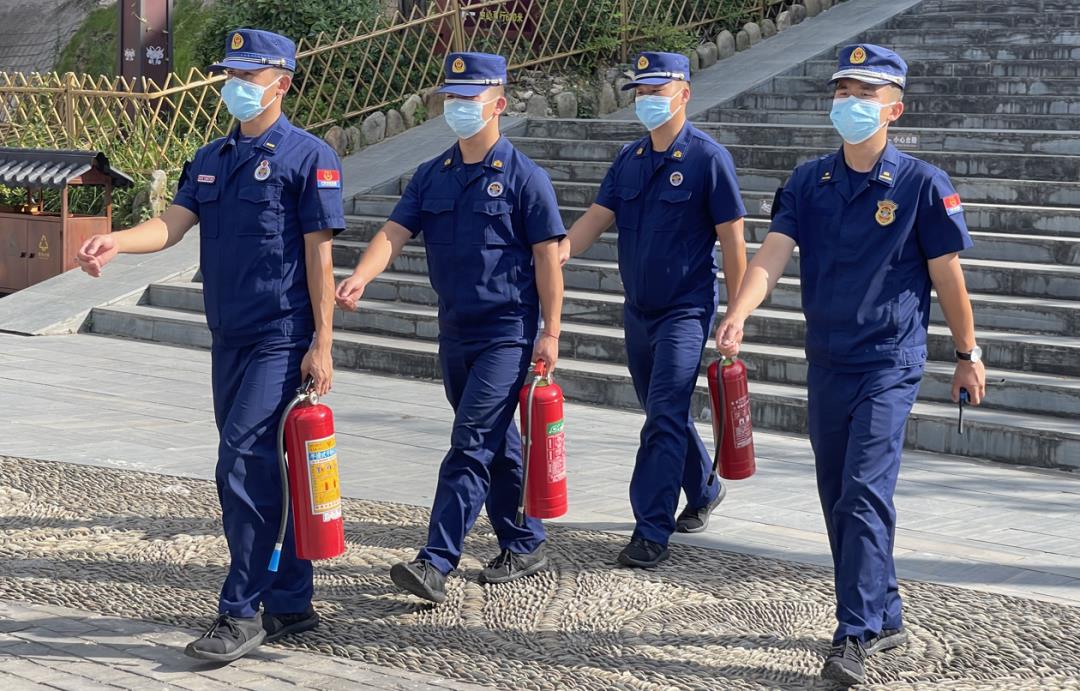
In addition, in view of the large flow of people and limited fire prevention and control ability in Xijiang Scenic Area, Leishan County established a leading group for tourism safety improvement in Xijiang Scenic Area, which was composed of 7 party and government leaders and 45 industry department heads. The county fire rescue brigade took the initiative to draw the county party Committee and the county government to combine the actual situation of the scenic spot. The Measures for Fire Safety Management (Trial) of Xijiang Qianhu Miao Village Scenic Spot in Leishan County and the Notice on Further Defining the Responsibilities of Fire Safety Prevention in Xijiang Scenic Spot and Strengthening the Responsibility Investigation have been issued successively to refine the responsibilities of fire safety functions of scenic spots at all levels and departments, and eight fire micro-stations and two fire observation posts, namely, the central observation platform and Baiyan, have been set up in the scenic spot.
The reporter came to the central observation deck post. On the observation deck, the Xijiang scenic spot was unobstructed. The post is also specially equipped with telescopes and thermal imaging probes. If a place "has a cigarette and a little spark", the duty officer can accurately capture and respond quickly.
There are 1,580 houses in Xijiang Qianhu Miao Village, with a permanent population of 1,446 households with more than 6,100 people. The full-time fire brigade of Xijiang Town Government divides Xijiang Scenic Area into four areas: Nangui, Yangpai, Dongyin and Pingzhai, and comprehensively strengthens the investigation of fire hazards in the scenic area through "all-in-one, all-in-one and active service".
"Although the business in scenic spots has brought economic income to our town, if the safety work is not done properly, such development is ‘ Walk with a limp ’ Once something goes wrong, the consequences are unimaginable. " Li Jian said that the barbecue street in the scenic spot is a long-standing problem of fire safety, and some merchants lack certain safety awareness in the use of gas, which requires repeated inspections and key education.
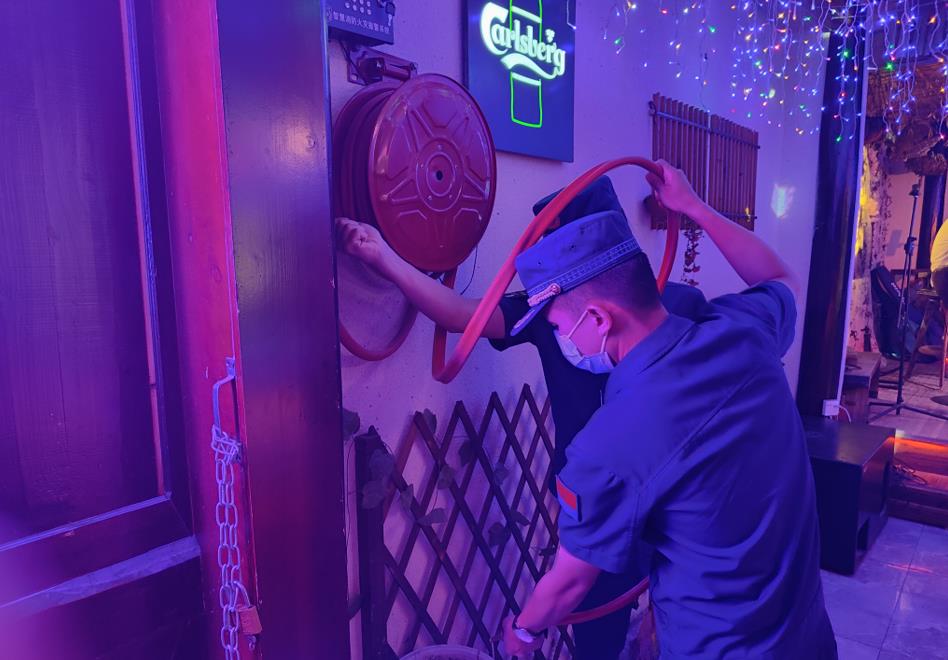
In the first half of this year, the Leishan County Fire Rescue Brigade organized fire rescue personnel and full-time fire brigade members to carry out actions such as no smoking in scenic spots, management of flammable and combustible decorations, management of restaurants and fire exits, etc. A total of 1,184 business premises were investigated, 78 decorative places of flammable and combustible materials were completely removed by compulsory measures, 84 restaurants and restaurants were urged to install gas alarms, and 186 illegal acts of occupying fire exits were investigated, 21 trailers and 152 motor vehicles were detained.
Strengthen security
Constructing a three-dimensional fire prevention and control system
Mountainous area is the biggest feature of Guizhou. Xijiang scenic spot is located in the slope zone of the transition between Hunan and Guangxi hilly basins in Yunnan-Guizhou Plateau, with rolling mountains.
"If there is a fire, large vehicles and equipment are inconvenient to enter. On the one hand, building a reservoir on the mountain can facilitate the villagers’ domestic water use, and on the other hand, when a fire breaks out, the reservoir can become a source of fire water nearby." Luo Jie said.
Safety is the premise of development. In order to do a good job in rural fire protection grass-roots construction, Leishan County Fire Rescue Brigade focuses on the essential fire safety transformation such as kitchen reform, water reform and electricity reform in wooden contiguous villages, and strengthens the management of fire safety sources.
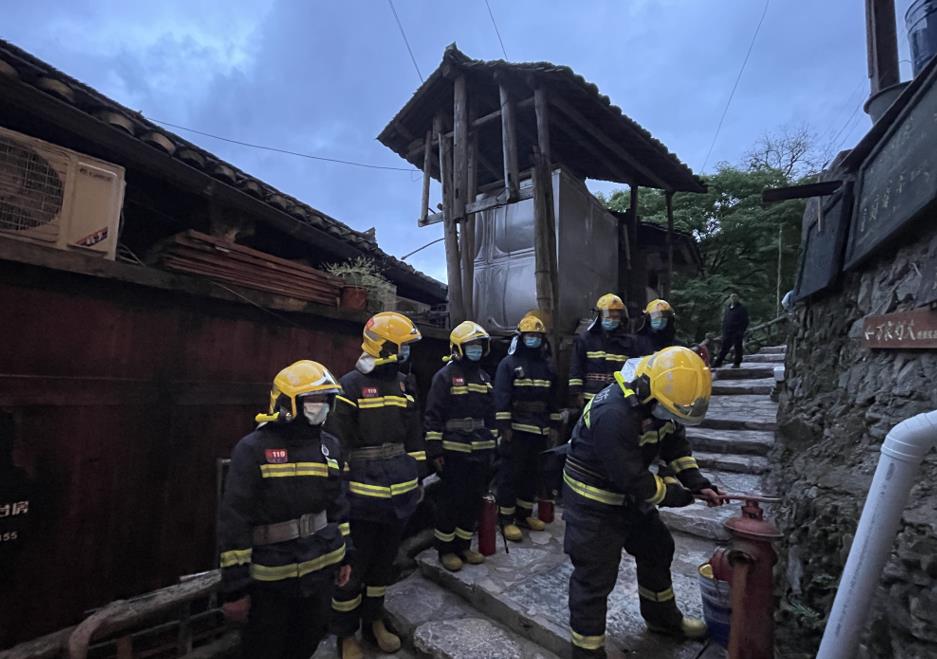
"Volunteer fire brigade, fire pool and motor pump are the three magic weapons to realize fire disposal, and water shortage is fatal." Fei Teng, the fire supervisor of the brigade, found that the fire water in the scenic spot could not meet the actual demand during the in-depth investigation of the fire infrastructure in Xijiang scenic spot, so the brigade reported to the county government in combination with the "water reform" project and put forward renovation suggestions. Subsequently, the county invested funds to improve the construction of 12 high-level fire pools, three circular fire pipe networks, 108 fire hydrants and supporting facilities and equipment with a total of 1,500 cubic meters.
Xijiang Scenic Area also focuses on making it clear that the public fire-fighting pipe network needs to be equipped with one fire hydrant every 40 meters, and each house can be effectively covered by two fire hydrants. All the business premises that are rebuilt by villagers’ self-built houses are equipped with simple automatic fire alarm systems, sprinkler systems and hose reels, and the technical standards such as safety exits, evacuation routes, allocation of fire-fighting equipment, and safe use of fire and electricity are made clear, thus solving the dilemma that the all-wood structure buildings in the scenic area cannot be implemented with reference to national and industrial standards.
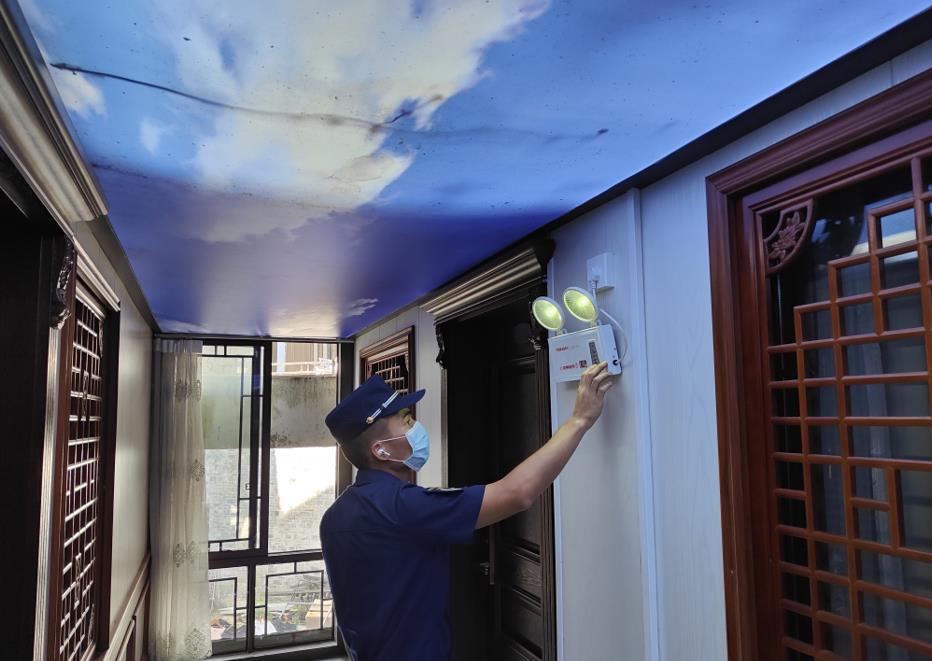
In order to solve the problem that the traditional electricity reform can’t effectively monitor people’s unsafe electricity use, which leads to a high number of electrical fires, Xijiang Scenic Area has installed more than 1,100 arc-extinguishing electrical fire protector terminals and 8 water level online monitors, realizing 4,680 times of early warning and disposal, realizing a new pattern of real-time online monitoring of electricity safety, intelligent analysis and judgment of rural electricity risk laws, accurate assistance in fire hazard elimination, and standardized fire safety management with data cages.
It is necessary to take physical defense and technical defense measures, but also to improve civil air defense capabilities. "Leishan is a gathering place for ethnic minorities, and the villagers here are very talkative ’ Love ‘ Heavy customs. " Luo Jie said, Xijiang Scenic Area should be governed by the whole people, implement the "ten-household joint defense", integrate the traditional fire management methods of Miao village with the traditional discussion, formulate and issue village rules and regulations with public binding force, and promote fire inspection, shouting for the village, publicity and training, monitoring of key personnel, greeting for weddings and funerals and other measures to be effectively implemented.
Active integration
Actively carry out rural revitalization and assistance work.
"Secretary Xiao Gong is here!" On August 2nd, Grandma Li Mingzhen, a villager from 12 groups of lamb chops in Xijiang Village, stood at the door of her house early in the morning. Today is the day when Gong Enpu, the first secretary of Guizhou Provincial Fire and Rescue Corps stationed in Xijiang Village, paid a regular visit. At the sight of Gong Enpu, the old man Li Mingzhen held his hand tightly and took it to the house.
"Li Popo, I think the high temperature has continued in recent days, and I bought you an electric fan. Don’t blow on the fan when you are old." Gong Enpu told Li Nainai while installing an electric fan.
Since he became the resident secretary of Xijiang Village in 2021, Gong Enpu has cooperated with Guizhou Provincial Fire Rescue Corps and Leizhou County Fire Rescue Brigade to actively carry out rural revitalization and resident assistance.
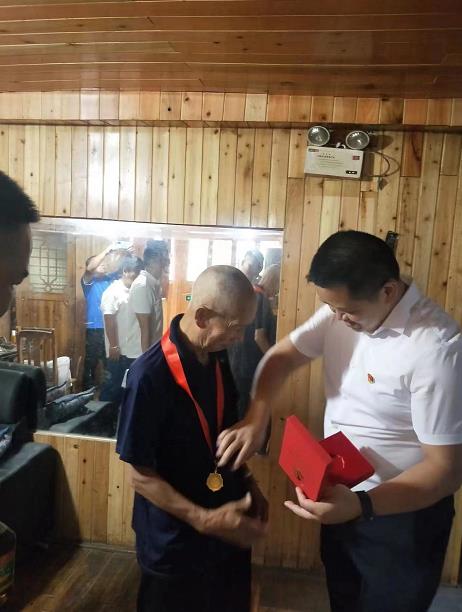
Guided by the idea that the Corps adheres to the combination of blood transfusion and hematopoiesis, and the combination of poverty alleviation and intellectual support, the county fire rescue brigade fully combines the characteristics and reality of ethnic minorities living in its jurisdiction, highly integrates fire rescue work with strategic policies such as "national unity", "poverty alleviation" and "rural revitalization", and works hard on the issues that the masses are most worried about and looking forward to, and makes practical moves.
The county fire rescue brigade brought the poverty alleviation work into the agenda of the party Committee, established the precise poverty alleviation strategy of "fixed point, fixed person and fixed household" and "promoting rural fire safety", implemented the "frontline work law of the party Committee", set up a 6-member party member vanguard team to carry out police pre-help at important nodes, and established and improved the fire protection work system of the two village committees.
In the meantime, the relevant personnel of the Party Committee of the Corps and the detachment have conducted in-depth research on helping villages for 13 times to find out in detail the difficulties existing in the current rural revitalization work, and awarded 600,000 yuan of "fire-fighting inspirational scholarships" to 32 poor students in 6 helping villages. The Corps has invested a total of 6.078 million yuan to build a fire-fighting industrial road, a fire-fighting bridge and a miniature fire station for the villages, and donated more than 50 children of poor households in the villages to actively develop fish and black rice fields.
"A year’s time is not long, but I have been fully integrated here, and I have gradually moved from a village ‘ Outsider ’ It became ’ Family ’ 。” Gong Enpu told reporters that whether it is the first-line rescue or the current assistance in the village, the villagers’ affairs are his biggest thing, and he can be the guardian of the safe development of his hometown without regrets.
